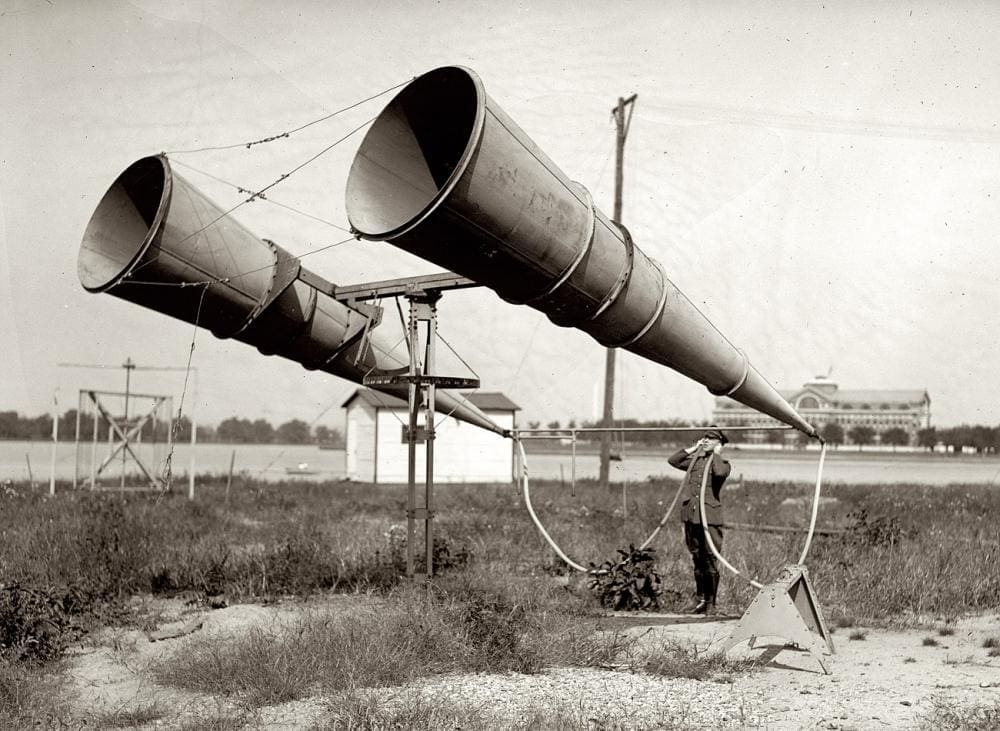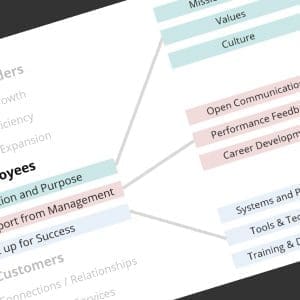Introducing new ways of thinking about Digital Products; true stories "from the field" of building Proof of Concept systems to get the Voice of the Customer.
If you buy into the whole “disruptive innovation” meme as your Internet of Things inspiration, you may be tempted to go the Steve Jobs route. Hang the market research, just develop a vision that is compelling and outlandish – something that they aren’t expecting, but will love and embrace – and market share and organic growth will follow. I’m not completely dismissing that idea – it’s a great way to start the thought process, and a core idea behind disruptive change is about “thinking differently”.
But I realize that we are working in the somewhat conservative world of specialty manufacturing. For small- to medium-sized businesses, with established and strong customer relationships and deep market knowledge; massive disruptive change does not come all that easy. To get that toehold, to become a blip on their radar screen – to introduce new ways of thinking to the organization and to the markets – we can mix in a heavy dose of classic New Product Development Process. Let’s go listen to the Voice of the Customer … Do these ideas make sense? What would you find valuable? What would you add? What would add value to your processes? What would you be willing to pay for? What would you be willing to pay for … right now!?
Maybe we’re just taking an approach that people in my organization are comfortable with. We like to talk about “out there” ideas around sensors, data, and mobile apps, but to spur folks to action, we will purposefully add tasks and follow-up work pulling input and feedback from our customers before we go “all in” on a new technology direction.
So what are some of our BUs working on?
Building One to Throw Away
At Company O, we are actively spinning up a project for “proof of concept” visualizations, illustrating a few different ways to present information streaming off of trucks and transports; generic concepts like tracking vehicle location, and more complex, domain-specific ideas like predicting the damage done to pumps from cavitation. Also, we aren’t doing this alone; we are partnering with one of our technology vendors to build sample apps that the Product Line team can show to customers. The VoC plan is to gauge customer interest, plus get ideas for other predictive maintenance applications where we track operational data from the machines and systems on the vehicle, and monitor for trends that would allow their fleet managers to proactively service the trucks on their own schedule.
Will these applications be connected to the actual Things in the field, reporting with live data? Nope – that would be overcomplicating a simple need. Our objective is to make it easy to get pre-launch feedback from potential customers – we can’t build the entire system if we don’t know what they want. Of course, we will only source data that we already gather right now – or that we feel fairly confident that we can add. But we do not have to figure out technical specifics (ex. mobile clients, cloud platforms) or operational requirements (ex. customer support or service levels) until we get a better feel that the market is actually interested in this stuff.
It’s entirely possible that our first two “sample” visualizations may never make it to the final product / offering. Not a problem – they are built to throw away – but we will learn a lot in the process. And the Customer will be more engaged in the conversation, now that we’ve given them something “concrete” to spur their imagination.
Cloud and Mobile Platforms
Other BUs might have a more concrete idea of what is required – and the “Build” process for those first VoC apps may need to address some of those technical and operational requirements. Companies E and L, for example, have some fairly specific ideas on the data they want to pull and the analytics or transactions they want to automate. Now the questions turn to how they will deliver this stuff to their customer base – and since we hope to have the customers upload the data for us, a helpful question might be to identify their preferred mobile platform.
This will lead to some great conversations; market segmentation folks may want to focus on IOS development because they personally interact with Things on that platform. They will have to come to terms with the market fragmentation of mobile – will they force themselves to further segment their target markets based on a parameter (preferred mobile phone) that may not add any value to their offering?
Similarly, software designers and developers may not have mobile, cloud, and design in their backgrounds, and feel the need to stick with what they know. Understanding the diverse needs of a consumer-like market will give Product Engineering and Software Development teams a chance to learn about mobile/web development concepts & tools like wire framing for specifications, and HTML5 / CSS / JavaScript for cross-platform development – and start to make some decisions on development style, interaction design, and supporting infrastructure.
The customer base will tell us how they want to take delivery; we have to listen for the must-haves and the nice-to-haves, and work to deliver the biggest benefit with the most reasonable, justifiable cost.
Social Media
For many industrial manufacturers, the idea of listening to Social Media just doesn’t resonate. What could a Specialty Manufacturer of Highly Engineered Products hope to gain? I recently took this question to a consumer products company; since some part of their business is B2B, they have given some thought to the question. I learned a few interesting things …
- They use Facebook for consumer connections, but really see that site as a medium for “promotions with something extra” – the opportunity to listen back, plus react when things are said. They also listen to Twitter to react if something bad is said – but of note, they do not use Social Media as a source for consumer / customer sentiment in a very active or proactive way (a little bit, but not a lot).
- They do not limit their activities to Facebook; Pinterest, for example, is big for them, because their target market / interest group is all around cooking.
- Their Human Resources team uses LinkedIn as a platform, to fully describe and market the company as a great place to work – it’s a “social recruiting” tool, as well as a general, “passive” corporate communications tool. Again, not a lot of proactive outbound messaging, but some reactive re: what are people saying about and to the company.
- They do NOT have full time employees monitoring and responding to events / comments / requests in the various Social Media platforms; they hire an outside firm.
When I asked how an industrial manufacturing company might use these tools, they thought that LinkedIn would be a good platform for Social Media-based outreach for complex, highly engineered products and markets. Why not (they suggested) establish a LinkedIn Group around a specific technology / product line / engineering specialty, and then actively post content, and recruit important customers & thought leaders? The objective would be to “lead the charge” on content creation, to become the “expert in the field”, a thought leader, and a key resource for customers looking for solutions.
Possible? At first, I thought our BUs might be too narrowly focused to warrant a focused LinkedIn Group. But how targeted and specific do LinkedIn Groups get? I did a few searches and found …
… 5 groups using the search terms “industrial seals”
… 35 groups using the term “microfluidics”
… 466 groups using the term “fire safety”, and but only 10 groups using “fire fighting equipment”
… 302 groups using “optics”, 200 using “photonics”, and 62 using both terms
… 8 groups using “positive displacement pumps”, and 3 groups using “air operated double diaphragm pumps”
I was really trying to stump the search engine with that last one – couldn’t believe I got three hits.
So LinkedIn could very well be a solid Social Media platform to reach out for customer input / feedback on Internet of Things initiatives – and other topics as well!
22 December, 2014
- IoT Field Notes: Whiteboard Wireframing
- IoT Field Notes: Solving Interesting Tech Challenges 2
- IoT Field Notes: Solving Interesting Tech Challenges
- IoT Field Notes: Listening to the Voice of the Customer
- IoT Field Notes: Muddled Marketing Messages






Comments (0)